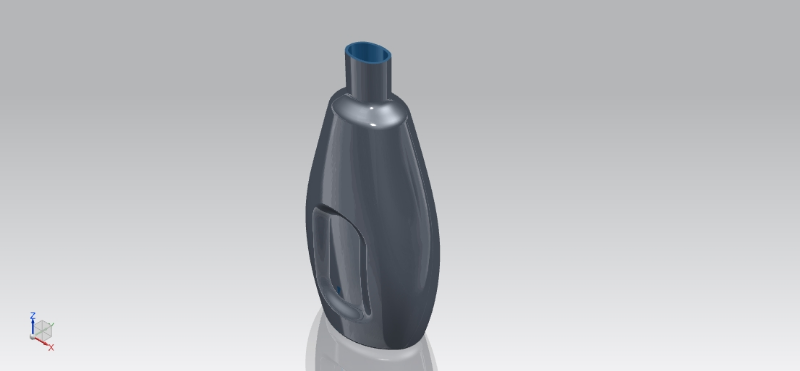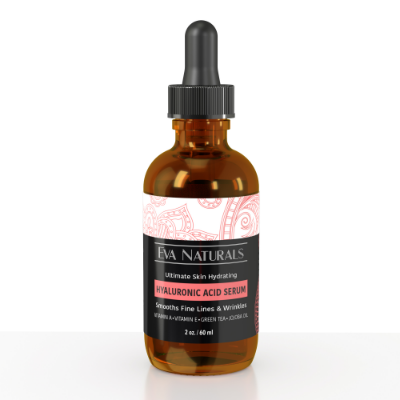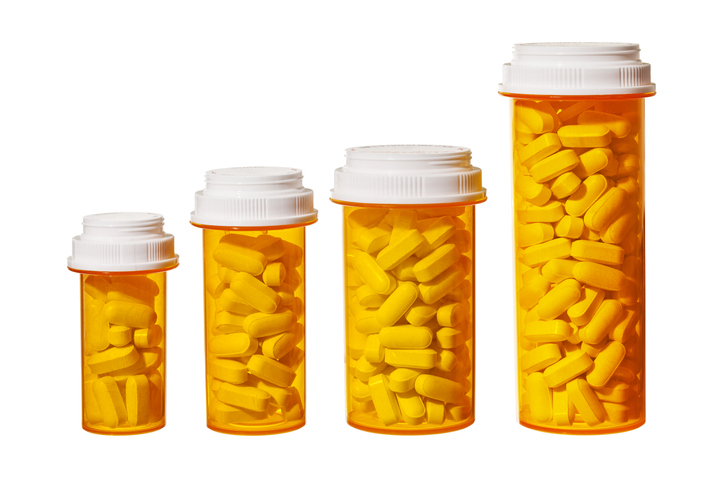It is widely acknowledged that children are high on the list of those who are vulnerable and in need of protection against potentially dangerous products, as they discover their environment through sucking, chewing, and touching.
This is a significant reason for the many regulations existing in the packaging industry that are designed to protect targeted consumers and their families, including small children.
Many products that are specifically made for adults, from medications and cleaning agents to pesticides, can be very harmful or even extremely deadly when handled by a child, primarily due to the risk of ingestion.
Children aged between one and four years are the most vulnerable, as they tend to put any objects they are curious about in their mouths and sometimes even swallow them. That is why the federal government, along with other regulatory bodies, have established regulatory guidelines to prevent children from gaining access to dangerous products. This makes child-resistant packaging a high priority, and all freelance packaging designers need to know these principles.
Creating custom child-resistant packaging involves complex details such as the product use, size, materials, and other factors, but many companies go through the child resistance certification to make sure their product is packaged in a thoroughly child-resistant manner.
What Is Child Resistant Certification?
This is a testing process that determines whether the packaging follows the consumer product safety commission standards for child-resistant packaging. This testing process is strict, involving criteria that ensure 85% of children between the ages of three and four cannot open the package while 90% of adults between the age of 50 and 70 can open it.

Key Components of Child-Resistant Packaging
1. The Opacity of Packaging
Though this is not required for most products, in some states, the packaging regulations/codes require that the packaging containing the products is not made of see-through materials. This makes it impossible for children to identify a package’s contents or how much of the product is left. Containers like this allow the product to remain protected after leaving the dispensary or during later use.
2. Messaging and Warning Labels
Warning labels are one of the most essential components to be included on your product’s packaging. Warnings about choking hazards exist to make sure consumers are aware of the possible risks and can, therefore, take precautions to protect themselves and any children from harm. Consumer product design services know the importance of warning label quite well.
3. Child-Resistant Package Testing
Testing is an essential component of developing your child-resistant packaging, as this will confirm its reliability. State guidelines require that child-resistant packaging must undergo testing in an independent and accredited lab to assess whether the packaging passes CR testing guidelines.
RELATED: 12 Tips to Create the Best Product Packaging Design
Consequently, the federal guidelines for child-resistant packaging specify giving four-year-old children the opportunity to attempt opening the packaging for a specified amount of time. The product success/fail ability to prevent child access is assessed at the 10-minute mark and, in some cases, at longer intervals.
Most children should have major difficulties with this task and find it impossible to open the product. However, testing is not always necessary to ensure that adults can access the packaging with ease.
4. Opening Mechanism
Many medications come with child-resistant lids that require you to both apply downward pressure and twist the lid counter-clockwise at the same time to open the container. However, it’s far from the only option, because for a product to comply with most CR packaging guidelines, the folding carton itself must have a CR design and prevent child access.
So, the central concept is simply that child-resistant packaging must be tough to open for children under the age of five while at the same time being reasonably easy enough for adults to open.

However, in exploring these concepts, you must still be able to fulfill many requirements to ensure that plastic packaging for pharmaceutical and healthcare products is child-resistant. The specifications include:
- Satisfying the need to protect the product from exterior influences
- Informing users about the content
- Ensuring that the content is easy to remove and that the package can be reclosed and reopened effortlessly
- Adhering to the guidelines of the child-resistant packaging regulatory body
- Protecting children from unintentional ingestion of medication
14 Tips for Designing Child-Resistant Packaging
Let’s look at 14 tips for the design of child-resistant packaging for your company’s new products:
- Consider How Easily Senior’s Will Be Able to Open the Package
Do not think only of children’s hands when designing your child-resistant product; you won’t want your product resistance extending to older customers. Some senior customers can have difficulties in opening child-resistant packages due to a lack of strength or agility.
It’s essential to ensure your older customers understand the opening mechanism so that even the critical age-group of customers aged 60 to 80 will not take more than five seconds to open a child-resistant package; this will be possible if the opening doesn’t require too much physical effort.
- Flexibility Is Key
Making the product flexible is also important, as combining the right materials is vital in preventing the lidding film from tearing. For instance, a child will often try to open blisters by twisting them, but the more resilient the back film, the more difficult it is for infants and children to open it. Excellent perforations will prevent children from accessing the tablets and pills, since when a child twists a perforated blister, the blister will surely fall apart.
- Make It Hard for Children, Not for Everyone
Get information about design choices in good time so as not to develop closures which are generally difficult to open. The design of child-resistant packaging is based on the fact that children at the relevant ages of 36 to 60 months are not fully capable of coordinating the ‘push’ and ‘turn’ movements at the same time.
- Plan Ahead
Careful planning can help to make packaging your product a success – not only for the benefit of children, but also for the benefit of the company, especially when a new mechanism is developed.
- Use Large Lock Caps
Prevent wear by permitting the use of larger lock caps with greater overlap. This makes it challenging for children to open the package and prevents the cam tips, which are always fragile from wearing off quickly if the package is used properly. This point is crucial because the wear of cams is one of the main reasons that squeeze and turn closures fail from time to time.
- Leverage, Leverage, Leverage
Try to use leverage as it is important to make sure that the outer part of the closure is always pushed up continuously. This task is performed by small levers placed inside the two-piece closure as many levers make the opening easy and smooth, ensuring life-long child resistance. Consequently, putting accurate spacing between the two closure parts prevents the closure from getting stuck.
- Triangular Reinforcements
It’s important to place small triangular reinforcements at the points where the welds meet as this will ensure much better results. This is usually the transition area from the welds to the nominal film thickness to prevent the typical weak point of product packaging.
- Pills Should Fit into Cavities
Using pills and tablets that fit exactly into the cavities has proven to be safer during tests with children than oval-shaped or round pills, especially if these are packaged in holes that seem to be too large.

This is because blister cards with flat, small pills that fill the cavities completely are safe even if they have a relatively thin back film, as even the back films made of paper have proven to be a good option. This is not to say oval and long pills are bad, but they offer more targets for children’s hands because of the leverage. It is also easy for children to pick off the pills that don’t fill out the cavities.
- Rounded Lock Caps
Make the lock caps on the bottleneck and the inside of the cap rounded and spherical rather than pointed. This is because rounded lock caps combined with long cap deflection are a very effective closure system for plastic packaging containers, ensuring the child resistance function lasts longer.
- Choose the Right Size
Think about the packaging size when designing child-resistant packaging. Know the type of diameter closures that fit the product that will make it hard for children to tamper but easy for an adult to open. For instance, the small hands and teeth of kids can grab small diameter closures more easily.
A small closure is also inconvenient for the larger hands of an adult; furthermore, a smaller closure permits only designs with small deflections, requiring the user to exert more force to open it. A wider closure is both more difficult for a child to tamper with and easier for an adult to use.
- Test the Ease of Resealing
For some products, especially those that are hazardous, it is important to keep them safe from children even after their first opening. In this scenario, it is extremely important that you test how easy or hard it is to reseal a package. Numerous packages can be used, but this might make it difficult for an average individual to be sure if the closure is sealed correctly.
This might mean the closure is left half open or closed so tightly that it takes too much effort to re-open it. The best approach to prevent this is to include a clicking noise that signals that the closure has been safely resealed.
- Consider Checking in with the Child Resistance Regulatory Body
When designing your child-resistant package, don’t hesitate to contact the child resistance regulatory body or a prestigious and experienced child resistance consultancy that specializes in both child resistance and convenient packaging for older citizens, as they will help you avoid mistakes from the very beginning and prevent you from incurring major costs. It is sometimes better to play it safe to avoid the risk of enormous expense.
- Peel Push Films
Use peel push films that are suitable for child-resistant packaging as well as for the convenience of elderly customers. The double film is usually equipped with a hidden slit where the pills are to be removed. The slit will become visible, and the content removed easily, by bending the film.
- Think outside of the Box
Moreover, it’s better to think outside the box and be conversant with the various techniques that children may use to open a product. Tests have shown that only 50 percent of all children use the same methods adults use on opening blisters by pressing down the pill or tablet. Children often try to destroy the back film with their fingernails and remove the pill. To prevent that, hard and solid films are being developed; finally, remember that it is efficient to adapt the shape of the pills to the cavities.
When choosing the ideal child-resistant packaging, ensure that it’s user-friendly, cost-efficient, and child-resistant. Your company reputation rests upon the integrity of your brand.
Therefore, you should place a high priority on maintaining that integrity by understanding the child-resistant certification requirements and consequently minimizing your costs and time involved in the developing process.
Cad Crowd Is Home to Expert Packaging Designers
If you’re on the hunt for a freelance packaging designer to help you design your new product packaging, look no further. Cad Crowd is home to some of the best CAD service providers in the world. To get a quote for the creation of your child-safe packaging, contact us today for a free quote.
